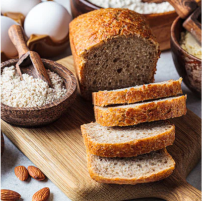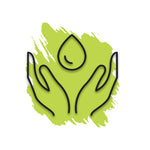Osteoporosis is a silent condition. You might not know you have it until you fall and find yourself with a nasty injury and begin to question your bone health. But the good news is, it can be prevented. It's all about building strong bones and that's something you can work on right now, whatever your age. We've got everything you need to know about osteoporosis.
Everything You Need to Know about Osteoporosis
Today we're sharing everything you need to know about osteoporosis including who is at risk, diet advice and prevention.
What is Osteoporosis?
Osteoporosis is a very common condition in Ireland, particularly as we age. It is a ‘thinning’ of the bones. Bone is a living structure that is constantly changing and re-modelling. It can strengthen and weaken with time, diet, heath and hormones. Up to 300,000 people over the age of 50 in Ireland may have osteoporosis. It is a silent condition with no symptoms. In itself, it does not cause aches or pains.
What are the consequences of Osteoporosis?
The major consequence of osteoporosis is fractures (broken bones). Fractures are often sustained through minor injuries such as a fall from sitting or standing height. Normal bone strength shouldn't allow a break to occur with a fall like these, even if on ice or concrete. 50% of women and 20% men over the age of 50 will suffer these ‘fragility’ fractures which can be a major cause of pain and immobility.
What are the most common fracture injuries?
The most common sites for fragility fractures are in the spine (giving a classic stooped appearance over time) hips, ribs and wrists. The consequences of these injuries can be serious. For those who break a hip - 20% will die within 1 year as a result. Half of older people can no longer live alone following a fracture and one in five go into residential care.
Who is at risk of Osteoporosis?
Both men and women are affected by osteoporosis. However, it is more common in women as they age due to the effect of reducing oestrogen levels after menopause. Oestrogen acts to protect bone strength and anything which disrupts menstrual periods for more than 6 months (excluding pregnancy) can also contribute to osteoporosis. This includes:
- low body weight
- anorexia
- over-exercising
- psychological stress
- early menopause prior to the age of 45
Medical Conditions that can Contribute to Osteoporosis
Certain medical conditions for example kidney disease, Type 1 diabetes, hormone disorders and medication such as prolonged use of steroids can contribute to osteoporosis. Those who are immobile for any reason - wheelchair bound or in residential care - are also at risk as regular weight-bearing exercise protects against the development of osteoporosis.
As with most things, our lifestyle is of great importance. Other risk factors to the development of osteoporosis include:
- smoking
- excessive alcohol use
- a sedentary lifestyle
Diet & Osteoporosis
Diet is key, particularly the ingestion of adequate calcium, vitamin D and protein to build strong bones. In order to ingest enough calcium, an average person needs to consume a pint of milk plus 50g of hard cheese or yoghurt per day. Calcium is also found in tinned sardines/salmon and some green leafy vegetables. Some foods are fortified with calcium and will be labelled as such.
Supplements
The best available evidence advises that, if using supplements, calcium should be always taken with vitamin D. Most products now contain a combination of these two components. Vitamin D works hand-in-hand with calcium in maintaining a healthy bone structure. We can make vitamin D through our skin via sunshine but many people are deficient - here's more about Vitamin D and the best supplements.
Can Osteoporosis be prevented?
Prevention of osteoporosis is centred on addressing the diet and lifestyle factors. Regular weight bearing exercise such as walking and muscle strengthening exercises are important as the ‘stress’ this places on the skeleton instructs the bone to strengthen itself in the right places.
Risk Factors
Those with certain medical conditions or who take medication such as long term steroids will need to discuss with their GP if there is a requirement for Calcium and Vitamin D supplementation or use of osteoporosis medication (e.g. bisphosphonates). In those with risk factors, a special x-ray test called a ‘DEXA scan’ may be useful in measuring bone strength to diagnose osteoporosis or its’ precursor, osteopenia. Your GP can use a scoring system to work out who will benefit most from testing.
Treatment
Once a fracture has occurred, a patient is already considered high risk and will likely need treatment for up to 5 years to try to improve bone strength. There is good research evidence to support the use of these medications. As with any treatment suitability, safe use and side effects must be discussed with the prescribing doctor.
Prevention of falls is also vital – in the elderly and for those in residential care, input from an occupational therapist and avoidance of medication such as sleeping tablets that can cause drowsiness, can help to create a safe living environment.
Osteoporosis is a silent condition that will affect a significant proportion of the population as we age. Prevention is better than cure and can be undertaken with simple lifestyle modification. If the risk factors described are ringing alarm bells for you, talk to your GP at your next check up to see how to improve your own bone strength for the future.
Further useful information can be found on the Irish Osteoporosis Society website www.irishosteoporosis.ie
Please note, this blog is for informational purposes only and should not replace medical advice.
It’s always best to consult your doctor before taking any new supplements, treatments or remedies if you are pregnant, breastfeeding or on medication.
Checked and updated: 13 August 2021













